|
Listen to this article  |
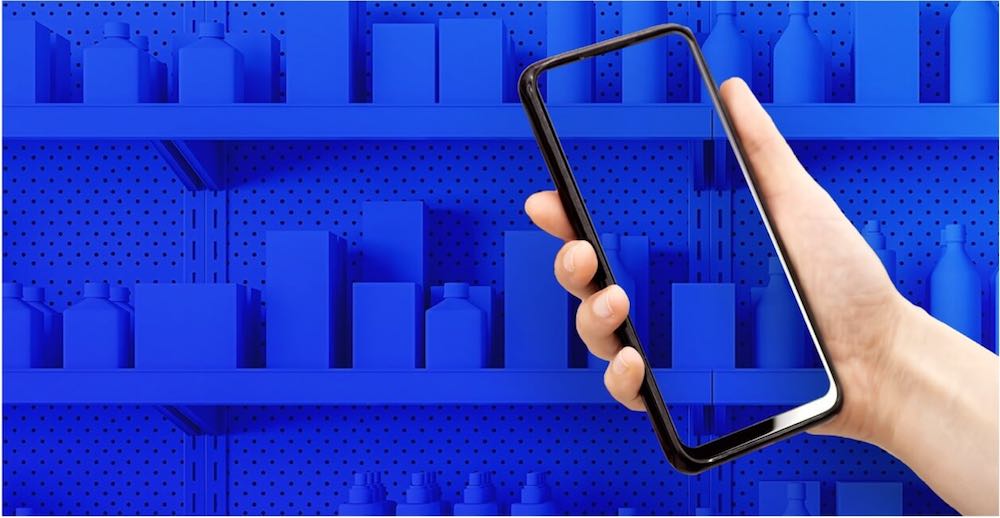
Bossa Nova is taking a “broader approach” to image-based AI analytics for retailers. | Photo Credit: Bossa Nova
Bossa Nova Robotics is no stranger to pivoting its business. The company started out working on robotic toys when it was founded in 2005. Then it developed a robot for researchers called “mObi” that was based on Carnegie Mellon University’s ballbot spherical locomotion technology. Then it rolled out what it’s best known for – autonomous mobile robots for inventory tracking, with Walmart as its primary customer.
The company’s deal with Walmart, however, abruptly ended in November 2020. At one point, Walmart planned to expand the use of Bossa Nova’s robots from 500 to 1,000 stores. But Walmart “found different, sometimes simpler solutions that proved just as useful, said people familiar with the situation,” according to The Wall Street Journal. These solutions included using human employees for monitoring inventory.
Understandably, Bossa Nova hasn’t talked publicly about its relationship with Walmart. So it’s been unclear what the future held for the company, which shut down its European business unit and reportedly laid off 50% of its staff after losing the world’s largest retailer as a customer.
However, The Robot Report has learned Bossa Nova has pivoted its business yet again. The company is taking a “broader approach” to image-based AI analytics for retailers and de-emphasizing the role of robotics.
De-emphasizing robotics
If you peruse Bossa Nova’s redesigned website, you’ll be hard-pressed to find references to robots. No mention of robots in the company’s datasheet (PDF) or on the “About Us,” “Company,” “Solutions” or “Leadership” pages. You will find the word “robot” in the section that explains how its image-based AI analytics technology is capture agnostic:
“Our AI is capture agnostic. This means that it can use data captured from different types of sensors. Whether you’d like to use a mobile device, a robot or fixed cameras, we’ve got you covered.”
The primary capture device Bossa Nova now touts upfront on the website is a mobile app. “Field associates, professional shoppers, crowds, and other agents take images of products, displays, and shelves in one or more stores. Bossa Nova interprets the image in five seconds or less. Bossa Nova delivers detailed product information, calculates analytics, and highlights issues. Our customers record the images and the data from the images in their databases. Then, our customers deliver enhanced analytics for their retail and CPG clients.”
In previous iterations of the website, the company touted its robotics capabilities and knowledge, even dedicating a page to its spinoff from CMU’s renowned Robotics Institute. The following two screenshots show parts of Bossa Nova’s website from September and October 2021. The screenshots were taken using the Wayback Machine.
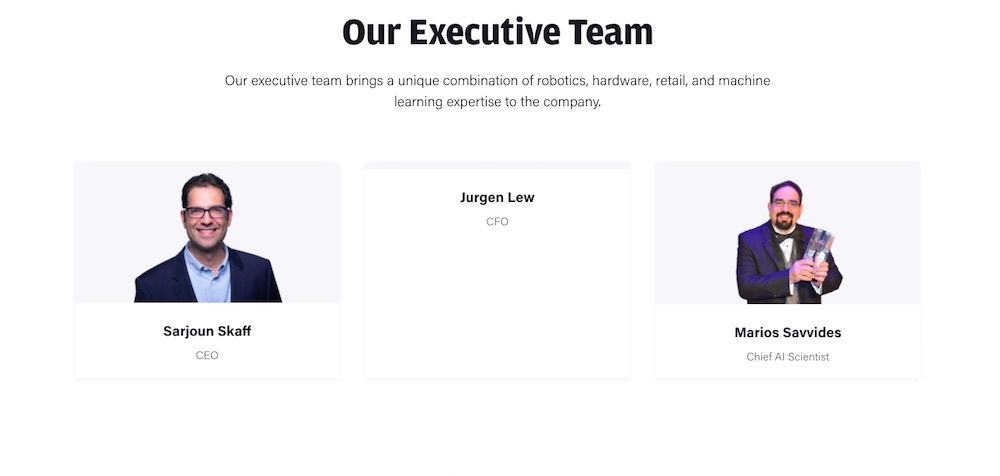
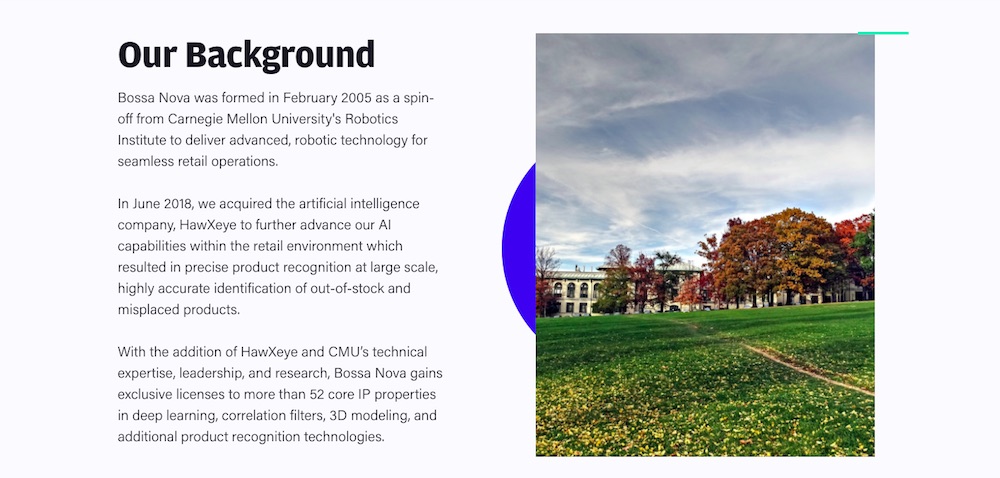
Here’s how Bossa Nova’s “Leadership” page reads now. Again, there’s no reference to the company’s robotics expertise or heritage. Instead the page touts the executive team’s “unique combination of retail and machine learning expertise.”
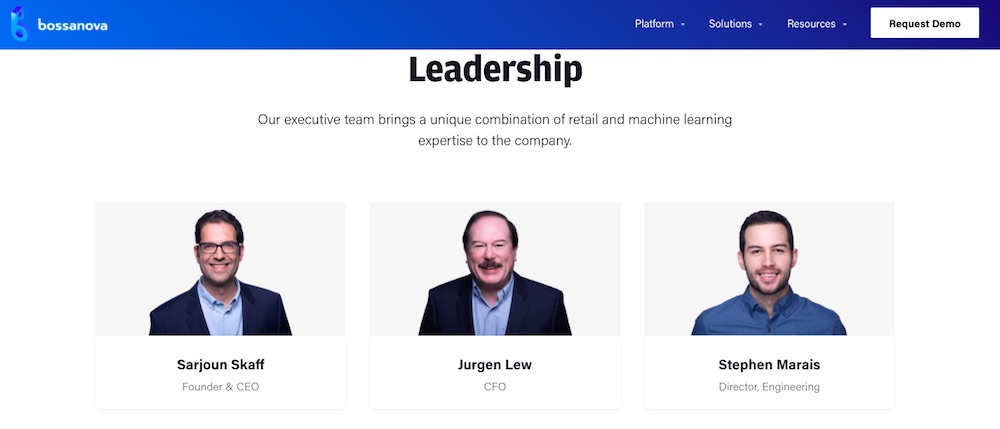
Agnostic to capture mechanism
Bossa Nova told The Robot Report it’s still involved in robotics and has “proofs of concept with large, national retailers that want to leverage the capabilities of advanced robotics to help manage inventory and improve store operations.” Bossa Nova said it couldn’t name the retailers for legal reasons.
Bossa Nova’s interim chief marketing officer is Holly Roland. Roland also is an operating partner at Cota Capital, a San Francisco-based investment firm that led Bossa Nova’s $29 million Series C round in June 2018. At the time, the Series C brought Bossa Nova’s total funding to $70 million.
Roland said losing Walmart as a customer was an eye-opening experience. She said Bossa Nova concluded retailers aren’t ready for [inventory robots] at the level robotics manufacturers need them to be.
“They’ll get there eventually,” she said. “Retailers have such thin margins that their speed of adoption of robotics has been impeded by a number of issues – incorporating new tech into operations can be challenging for any company, but the dynamics of retail store operations is an especially tough environment for deploying automation technologies, changing long-standing practices and training staff.”
Roland added that the pace of robotics adoption is too slow for it to be the only focus.
“Retailers are dealing with so many disruptions that bringing insights to them through other channels might be the fastest way to help them to improve various operational functions,” she said. “We want to be agnostic to the capture mechanism they want us to use. Want a robot? We have it. Want your staff to use a mobile app? We can help you there as well.”
Roland said Bossa Nova considers this a broadening of the business more than downplaying any one technology, such as robotics.
“It’s certainly evolving as we sort out the new business strategy and where we go next,” she said. “Bossa Nova was well known as a robotics company, but we want to be clear in the rebrand that we’re about insights and analysis. Retailers have all this great information coming from many capture mechanisms, and that’s where we want to be a player – retail AI.”
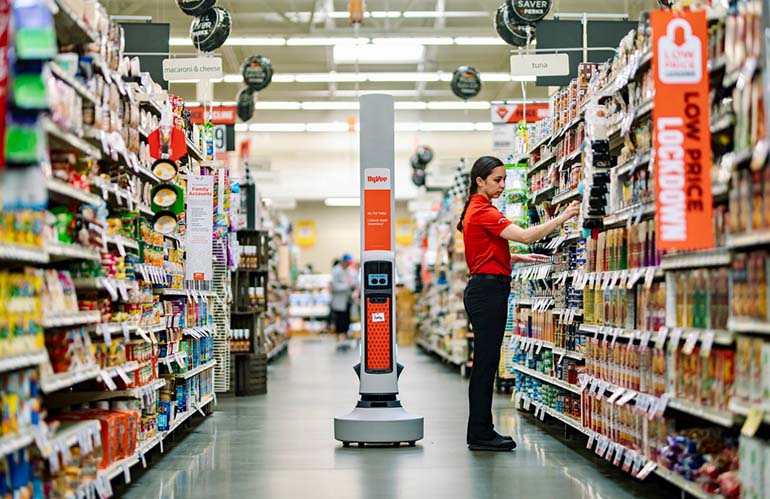
Simbe’s Tally robot moves autonomously through stores to check inventory levels. | Image credit: Simbe Robotics
Retail robotics outlook
Simbe Robotics is a leading developer of mobile robots for on-shelf inventory tracking. When Bossa Nova’s primary focus was mobile robots, it was a direct competitor of Simbe’s. Not so much anymore. Brad Bogolea, co-founder and CEO of Simbe Robotics, disagrees with the idea retailers aren’t ready for robotics.
“At Simbe we saw the pandemic further illuminate the importance of real-time, accurate and automated shelf intelligence data to strengthen supply chains, improve in-store operations and enhance the customer and team member experience,” he said. “We’ve seen tremendous growth over the last 18 months and increased interest among retailers especially in the grocery space, celebrating a chainwide expansion with Schnuck Markets, new partnerships with Meijer and Hy-Vee, and several unannounced retailer relationships.
“This momentum signals a growing awareness of the critical importance among retailers to leverage automation and computer vision technology that strategically and cost-effectively improves in-store operations, while providing invaluable data insights across their business.
“While many companies have tried to capture this type of data with mobile devices, it doesn’t provide the coverage and frequency retailers need at scale.”
Simbe was also recently granted a patent covering the application of autonomous mobile robots and vision for tracking the freshness/ripeness of fruits and vegetables in a grocery display.
Credit: Source link


Comments are closed.